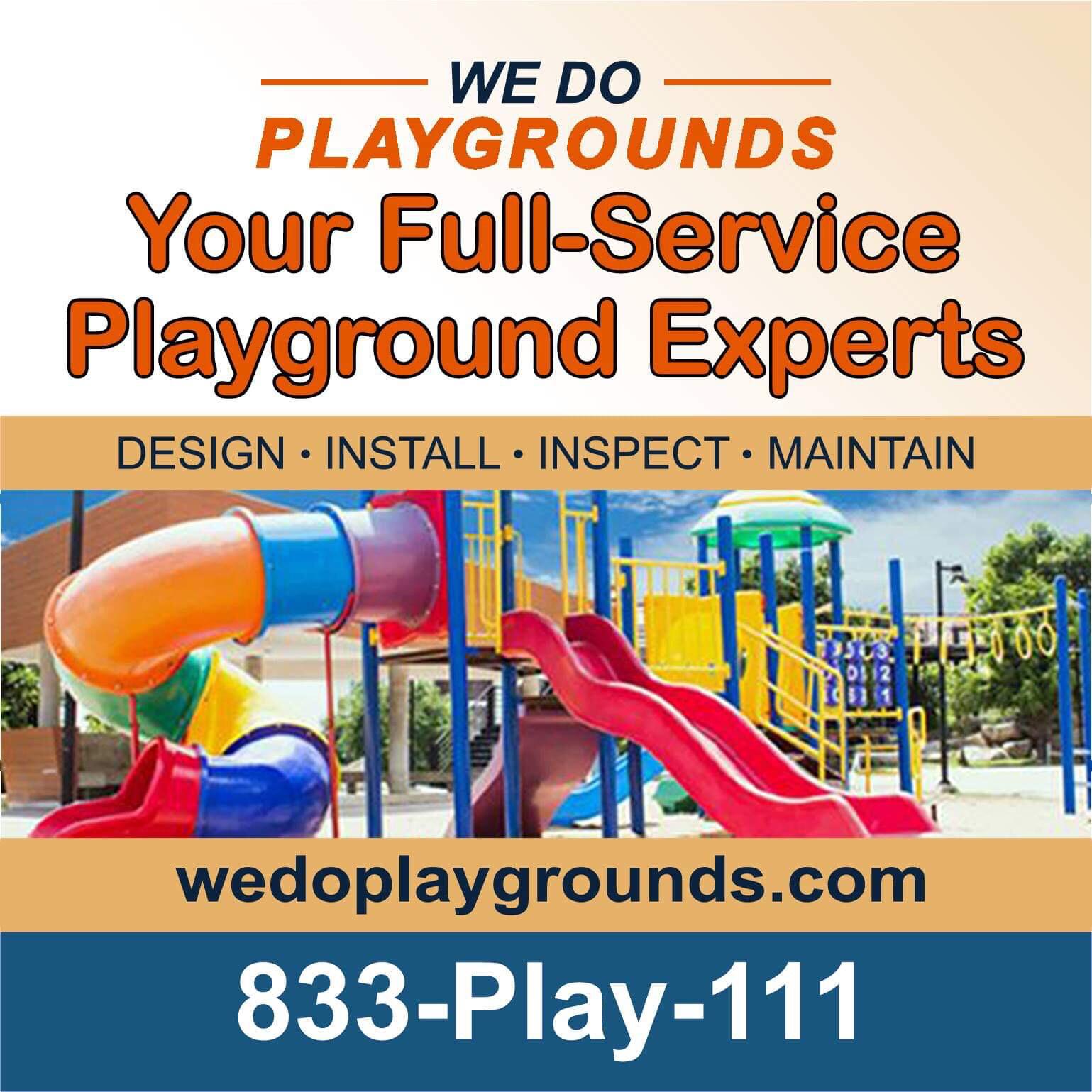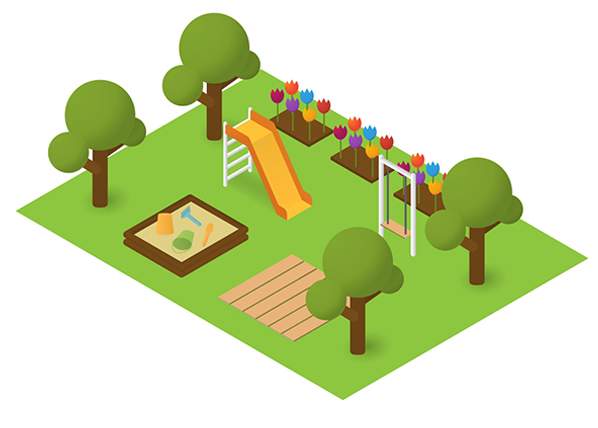
Why have your playground inspected?
Only certain states require playground equipment inspections, meaning it’s easy to construct a playground and not think about having it inspected. However, it’s crucial to have your playground inspected because inspections help keep your playground up to quality standards, and keep the children who play on it safe from harm. If an accident or injury were to happen on your playground and you didn’t invest in a playground safety inspection, you are liable for any injuries that occur from your negligence in not making sure it is safe for play. When you don’t get your playground inspected, you could have a lawsuit on your hands. Inspections keep you safe from having to pay a lawsuit settlement, and ensure the safety of the children who play on your playground. With J.C. Walker & Sons Corporation, our playground safety inspectors are experts who can identify hazards and other environmental conditions that an untrained person may not see.
The Playground Inspection
A playground equipment safety inspection is your inspector examining the whole setup in detail. The inspector will look at the fine details of the equipment and how it’s put together, They will then examine the surfacing and whether or not it’s suitable for play and look at the borders of the playground. In addition, they will take measurements and photos to compare your playground with the current standards.
In playground safety inspections, there are inspection reports, and there are audit reports. Both involve a full examination of your playground, from the equipment to surfacing and finally to the borders.
When new play equipment is installed and at the introduction of a new playground safety and maintenance program, it is good practice to have an audit of the equipment performed by a Certified Playground Safety Inspector (CPSI). The audit will note conditions that are not compliant with current industry standards and will form the basis for a systematic program of removal, repair, and/or retrofit. Those conditions are compared to the prevailing standards and the results are then issued to you in a report.

What the playground inspection consists of:
Where is a playground inspection required?
When it comes to getting a playground equipment inspection done, many do it to keep their playground safe for the children who play on it and avoid liability through showing an effort to maintain your playground area. In most states, playground owners, legally, do not have to get an inspection done. The 16 states, that have adopted Consumer Product Safety Commission (CPSC) guidelines are:
Arkansas | California | Connecticut | Florida | Illinois | Michigan | New Jersey | North Carolina | Oklahoma | Oregon | Rhode Island | Tennessee | Texas | Utah | Virginia | Wyoming
Changes
Because play equipment and surfacing are subject to changes from use, abuse, and climate, they must be inspected on a regular basis. The frequency of inspection will be determined by many factors, including: equipment age, use, and materials. Also, external factors like: the age of the users, climate, vandalism, and playgrounds: low frequency and high frequency.
Low Frequency Inspections
Often performed quarterly or semi-annually, low frequency inspections are in-depth investigations of the equipment and surfacing, looking for wear and tear. This inspection requires a playground inspector with mechanical knowledge and extensive knowledge about play equipment and surfacing standards. During or immediately after the inspection, staff should do preventive maintenance and repairs and/or remove damaged equipment to remedy problems discovered in the inspection. An example, of this type of maintenance, would be replacing heavily worn chains that were noted during the inspection.
High Frequency Inspections
Often performed daily or weekly, high frequency inspections look at frequently changing conditions caused by use, weather, and/or vandalism. During a high frequency inspection, staff checks and corrects playground conditions such as loose-fill surfacing depths, sanitation issues, and the presence of trash and debris. If any hazards are discovered, staff should follow school or agency procedures such as completing documentation, taking the area out of use, and/or correcting the problem.
J.C. Walker & Sons is certified, by the National Recreation and Park Association, to provide playground safety inspections according to the Consumer Product Safety Commission’s guidelines. Contact Us to learn more about what we can do for you.
Playground Design & Build
When it comes to playground design and undertaking a new playground build project, there are a lot of factors to take into consideration: Budget, design, age group, location, environment, and safety surfacing. Understanding who you’re designing your playground for is incredibly important. Some of the more important considerations include:
Selecting the Appropriate Site:
When you decide to build a playground, you have to first choose where it will go. In determining where to build your playground, consider the following:
- Travel patterns to and from playgrounds - This refers to considering hazards. Are there any potential hazards in the way of people being able to safely move to and from the playground?
- The distance of the playground from nearby potential hazards - Are their roads with traffic, drop offs, or cliffs nearby? Make sure that if this is the case, that there is a method in place of keeping the children from running away from the playground.
- Sun exposure on the playground - Is your playground going to get so hot from sun exposure, that it will burn the children who play on it? Make sure that slides, platforms, steps, and railings are out of direct sunlight, as well as provide signage that playground equipment exposed to harsh sunlight can cause burns.
- Slope and drainage - Take precautions to make sure that loose materials will not wash away. Proper drainage and playground surfacing will prevent washouts.
Making Sure Your Design Is Safe
A big reason why playgrounds are constructed in the first place is to provide children a place for exercise and fun. The thought provoking part in designing playgrounds is providing a challenging and fun environment for the children, while making sure it’s safe for them to play on.
- How many children do you anticipate playing on your playground?
- Does your initial design support that many children? If not, how are you going to design it differently?
- Do you have it in your budget to do so?
Making Sure It’s Age Appropriate
The differences in playground equipment needs are drastic between toddlers and preteens. It’s important when designing a playground, that you’re accommodating the ages of the kids that will be playing on it. In designing and building playgrounds, best practices suggest allocating a separate area for kids younger than four years old. Their play needs are so different from older kids’ that there’s a chance they could get hurt. Keeping your playgrounds age appropriate will also attract more people to your playground, if they see that their kids have a space to safely play.
Accessibility
Is your playground accessible for children at all ability levels? In 2000, the ADA Accessibility Guidelines For Play Areas was issued. It was issued to ensure the development of playgrounds and play areas that are accessible to those with disabilities. In conforming to this standard, it’s important to consider how children of varying abilities can play on your playground.
How Long Does It Take?
Designing and building a playground varies in the amount of time it takes to construct. Depending on the complexity of the playground structure, construction can vary anywhere from five to ten days, to six weeks. A minimum of two weeks of construction time is a safe estimate to accommodate inevitable bumps in the road. Make sure when you’re preparing to begin your next playground project, that you’ve accommodated for the proper amount of time.

